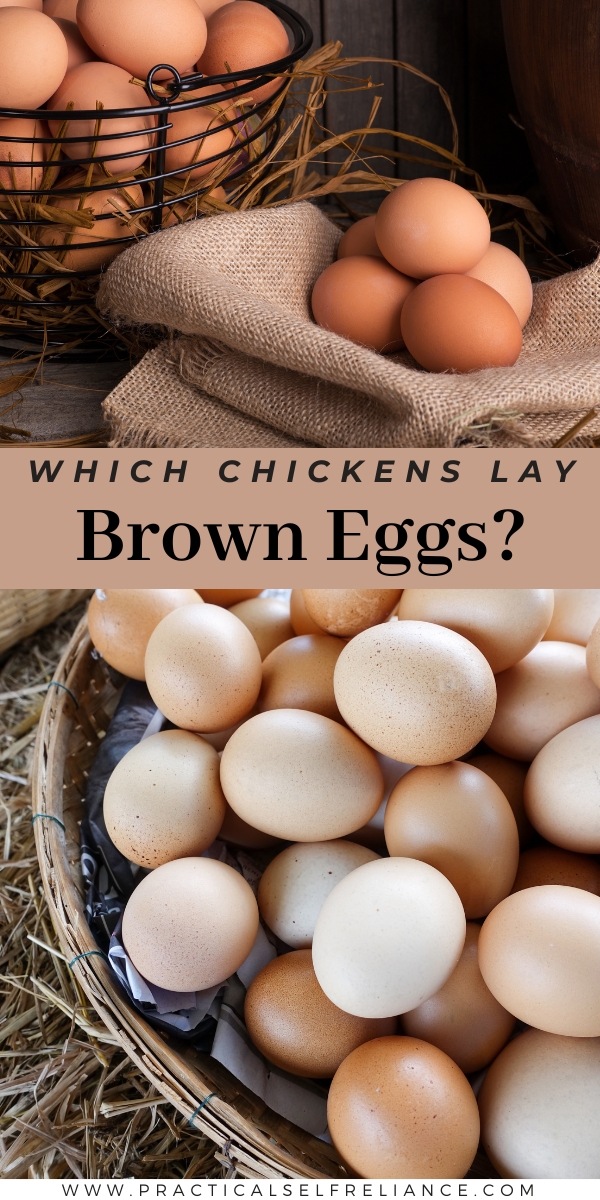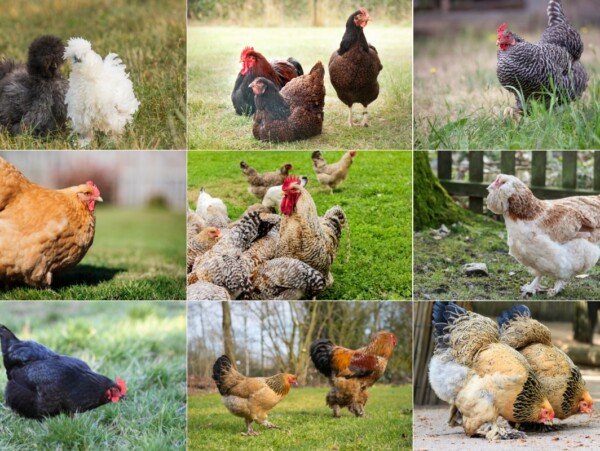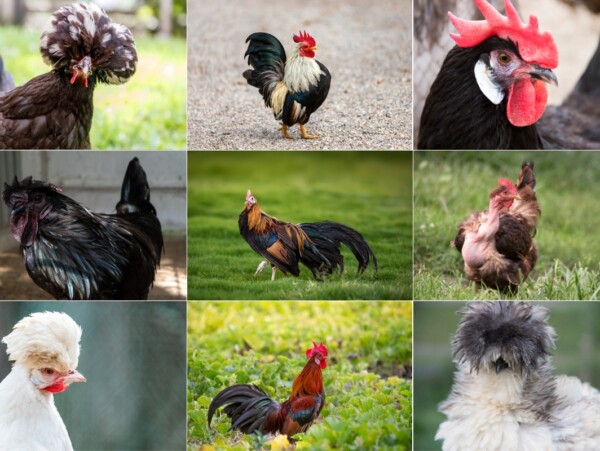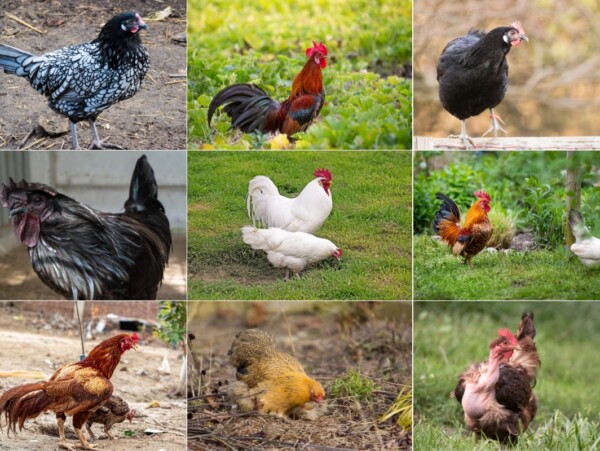Affiliate disclosure: This post may contain affiliate links. Please see our Privacy Policy.
Chickens that lay brown eggs have been the standard in backyard flocks for many years now. Even as rainbow egg colors make their way into baskets, brown egg laying chicken breeds are still a dependable way to put eggs on the table.
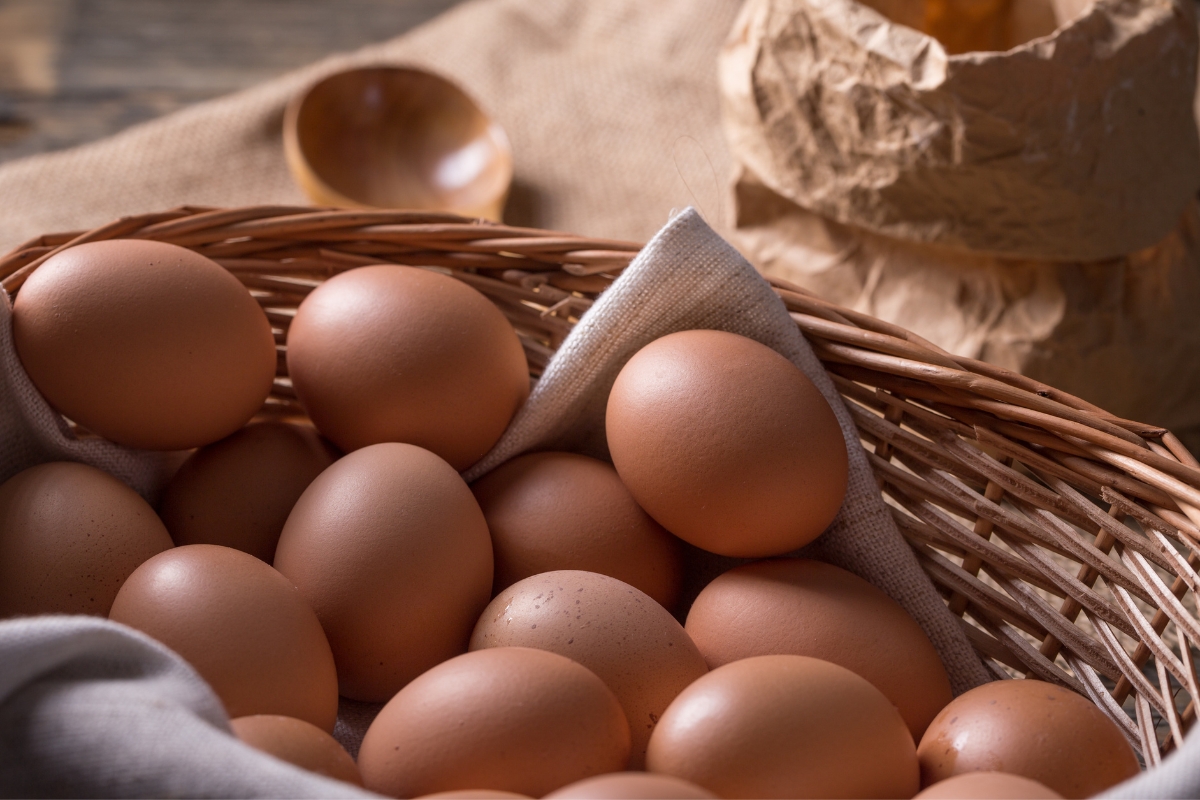
Chicken egg colors are a bit like fashion. For a while, brown eggs were the norm, and then white egg laying chickens became popular as white was synonymous with “purity” and “wealth.”
Things shifted again about 50 years ago, as commercially raised chickens were all laying bright white eggs…and small farmers were often raising brown egg breeds. Brown egg breeds are often better foragers, and tend to do better on smaller farms.
As a result, people began thinking of brown chicken eggs as “healthier” since the organic, cage-free and free-range eggs were most often brown chicken eggs.
The thing is, the color of a chicken eggshell is determined entirely by the chicken breed, not how they’re kept. So industrial farms began keeping the suddenly more popular brown egg chickens, and now you’ll see cartons of industrial brown eggs in the grocery store.
Still, brown egg-laying chicken breeds tend to be some of the most dependable and adaptable chickens for backyard flocks, and if you’re raising them yourself, you’ll likely see higher quality than the grocery store version (regardless of the shell color).
(If you’re interested in collecting a rainbow of eggs from your backyard flock, I’d suggest reading my beginners’ guide to chicken egg colors, where I take you through all the different color options… including easter egger chicken breeds that lay blue eggs and olive egger breeds that lay green eggs.)
How are Brown Chicken Eggs Formed?
Like other colors of chicken eggs, brown chicken eggs are white when the shell is first formed. Before it gets to that point, the journey of a chicken’s egg begins in the hen’s ovary. During ovulation, a yolk is formed in the chicken’s ovary—at this point its called an oocyte. Once the oocyte is formed it is released into the oviduct, a two-foot long tubular part of the hen’s reproductive anatomy, it will go on to become a complete egg over a 24 to 26 hour period of time.
As I mentioned, the eggshell that forms first will always be white. This is because it’s made of calcium carbonite, a naturally-occurring white mineral that comprises all egg shells. In the last 90 minutes or so of the egg’s journey, a brown pigment is released from the hen and coats the exterior of the shell. This bit of chicken biology is apparent when you crack open a brown egg, as the interior of the shell is still a stark white.
Where do Brown Egg Chickens come from?
Unlike some breeds who lay specific colors, such as pink or blue, brown egg laying chickens originate in several different countries from all over the world. In the list below, you’ll find breeds from the United States and Germany, as well as one breed first kept by indigenous people.
Interestingly, you’ll also find chicken breeds that are a result of cross-breeding—these birds are made up of the best genetic traits of both the rooster and the hen, usually with the express purpose of creating a dual-purpose breed that is equally suitable for eating as well as its egg laying capabilities.
Brown Egg Laying Chicken Breeds
The breeds listed below lay a range of eggs in shades of brown. From a light tawny brown that verges on pale pink to a deep burnished cinnamon color, the world of brown egg laying chickens offers plenty of variety in size and color.
Depending on the age of the bird or the time of year, you might notice that there’s a variety of shades with the same hen. Whichever breed you end up choosing for the coop, you can be sure of beautiful brown eggs over the course of the year.
Rhode Island Red
You might recognize Rhode Island Reds already—they’re the official state bird of Rhode Island (although they were actually developed in Massachusetts a century ago). If keeping hens is new to you, these are a great beginner bird; just be sure to choose the production strain versus the heritage strain to maximize egg production. Rhode Island Red hens will lay 5 to 6 light brown eggs per week or up to 300 per year).
A medium-sized bird, hens typically weigh between 6 and 7 pounds. You can count on them for being cold hardy (just make sure their toes are covered with straw when temperatures take a nosedive to protect them from frostbite), but Rhode Island Reds don’t thrive nearly as well in hot climates—they’ll need plenty of shade and protection to survive the summer months.
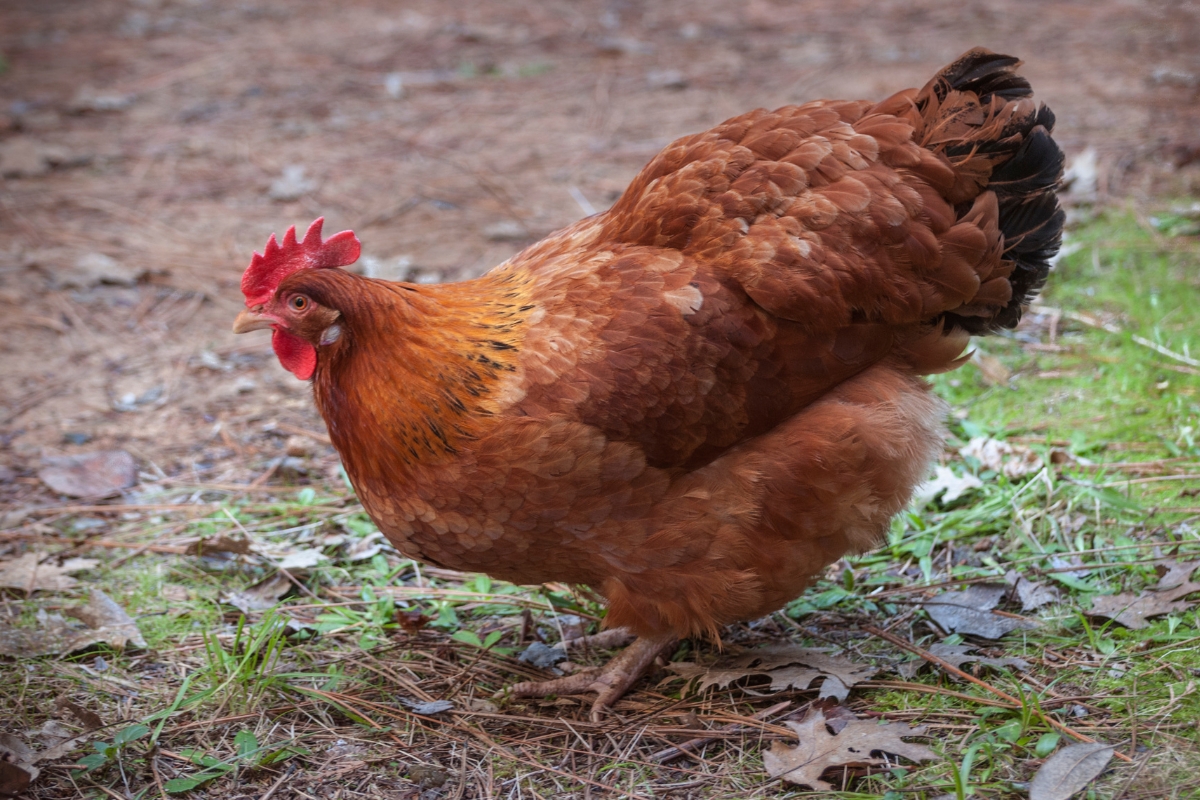
Golden Comet
Golden Comets are a hybrid breed, the result of cross-breeding a White Rock hen with a New Hampshire rooster. A smallish chicken, this breed has a white and chestnut-colored plumage and typically weighs in at 5 pounds or less. Golden Comets are phenomenal layers, and will produce 7 large, reddish-brown or light brown eggs per week or up to 330 per year (this propensity for egg laying is why you’ll often find Golden Comet eggs for sale at the farmers market).
Another positive trait of Golden Comets? They’re exceptionally cold and heat hardy, even when temperatures are very low as long as the hens are given straw to protect their feet from frostbite.
Black Sex Link
Like Golden Comets, Black Sex Links are a hybrid breed (a cross between Rhode Island Roosters and Barred Rock Hens) that lays large light brown eggs. Mature hens have distinct black feathers that have a greenish tint when reflected in the light and some chickens will also have patches of reddish feathers.
Black Sex Links are prolific layers and can produce up to 300 large brown eggs per year (about one egg per day when the weather is warmer, although they are both hot and cold weather-hardy). This breed is friendly but on the skittish side, not particularly broody, and are impressive foragers.
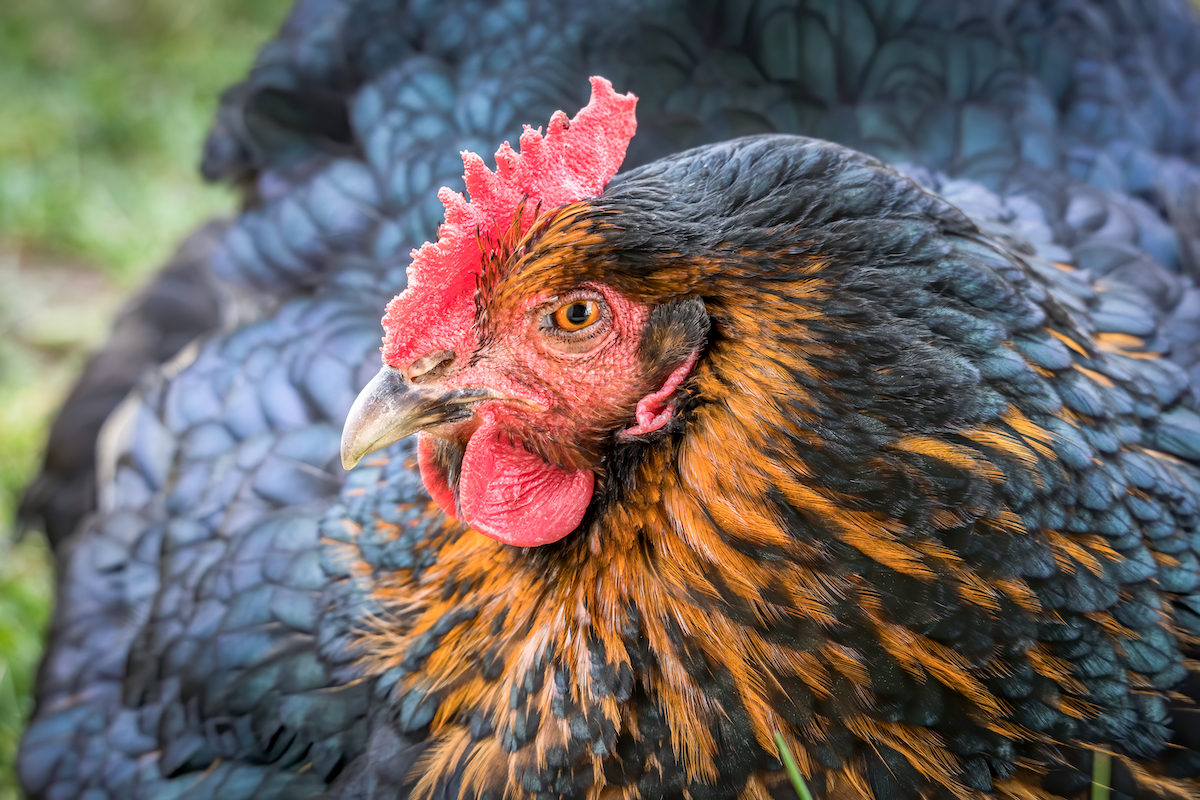
Bielefelder
A new breed compared to other brown egg layers, the Bielefelder breed was developed in Germany in the 1970s to be efficient egg layers with a friendly disposition—the dual-purpose breed is so new it was only imported into the US in 2011 (where they remain quite rare). Bielefelders are large chickens with eggs to match, hens lay 5 pink-brown eggs per week and up to 230 per year, with the egg color matching the shade of their plumage.
This gentle breed is somewhat broody and loves to have room to free range; it has good heat tolerance and does exceptionally well in cold temperatures. Incidentally, Bielefelders are sometimes bred with blue eggers to produce “olive egger chickens” that go on to lay green eggs.

Wyandotte
Named after the an indigenous tribe called the Wendat, the dual-purpose Wyandotte breed is cold-hardy and can resist frost bite in all but the coldest temperatures. Wyandotte chickens are medium-large, with hens weighing in around 6.5 pounds, and are typically near or at the top of the pecking order. Wyandottes average 4 medium-sized light brown eggs per week or 200 per year.
Wyandottes are famous for their beautiful plumage; hens have laced feathering in one of 17 official standard breed colors. This breed is a great starting place for beginners, they make excellent foragers and prefer to roam free range if possible.

Brahma
Brahma chickens are a large breed (one of the largest, in fact) and can weigh upwards of 8 pounds. Live in a colder climate? You’re going to want to check out this breed, which are protected from chilly textures by their signature plumage, which covers their legs and two outer toes in addition to the rest of their bodies. Brahma hens do their best laying over the winter, during which time you can expect 3 to 5 large, buff-colored eggs each week.
These chickens are big eaters and are good foragers, which can partially make up their dietary requirements. Although Brahmas do well in the winter, they need extra care during the summer—shade and water should be available at all times.
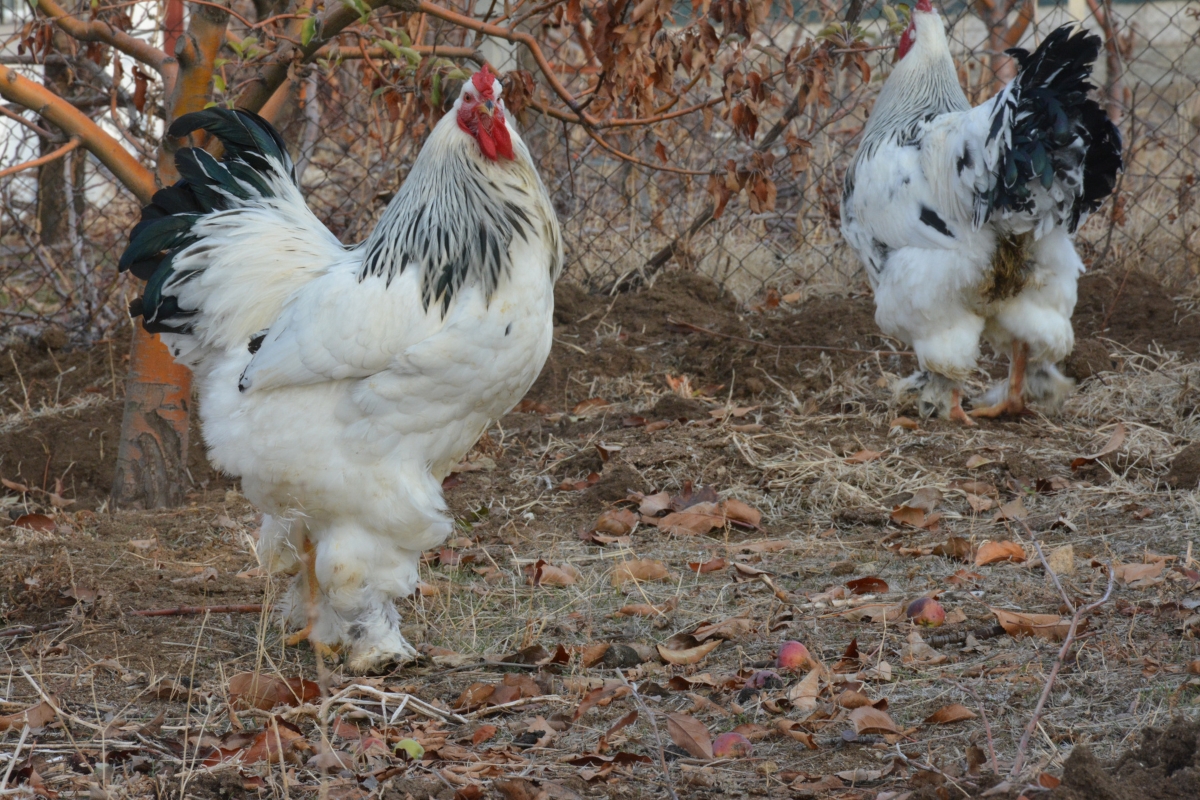
Orpington
A large brown-egg laying breed, you can expect Orpington hens to produce 3 to 5 medium-sized light brown eggs per week or around 150 to 250 per year. Due to the quiet nature of Orpingtons, this breed is an ideal choice if you live in the city or in any area where noise needs to be kept to a minimum. However, Orpingtons require at least 4 feet of coop space to thrive and as well as plenty of room to roam free range outdoors, so keep this in mind when brainstorming the best breeds for your space.
Buff Orpingtons, which are a light tan color, are the most popular variety, but they can also be found in rare colors such as black, blue, and white. Because of their fluffy plumage, Orpingtons are cold hardy, but they don’t fare as well in warm weather. The breed is broody, does well in free-range conditions, but doesn’t excel at foraging for food.
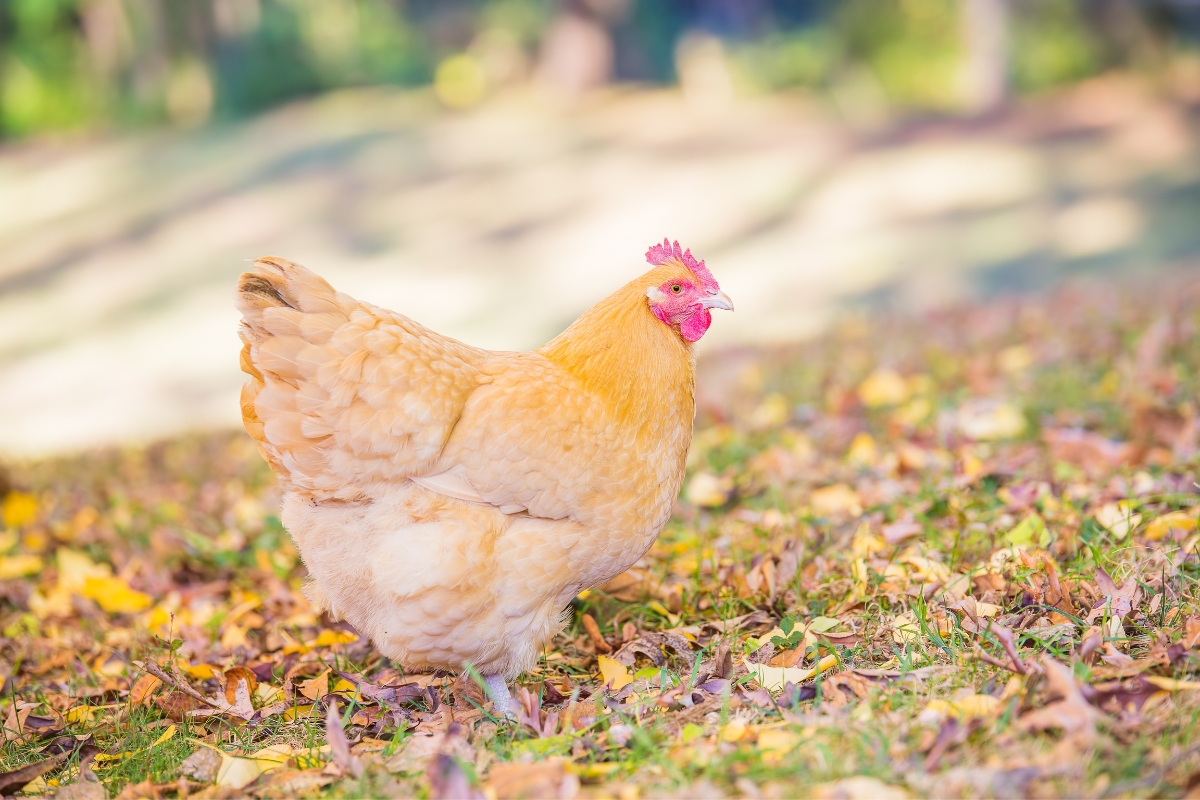
Jersey Giant
Jersey Giants are an impressive breed not only because of their formidable size—this is the largest breed in the US—but also because of their gentle giant personalities. In fact, Jersey Giants are so docile and friendly they’re sometimes kept as pets.
This breed isn’t recognized for its egg-laying capabilities for two reasons. First, Jersey Giants will only lay 2 to 4 giant-sized creamy brown eggs per week and second, because of their gigantic size hens are much more likely to crush their own eggs. So while this breed is impressive to look at, it wouldn’t be my first choice in terms of egg production.
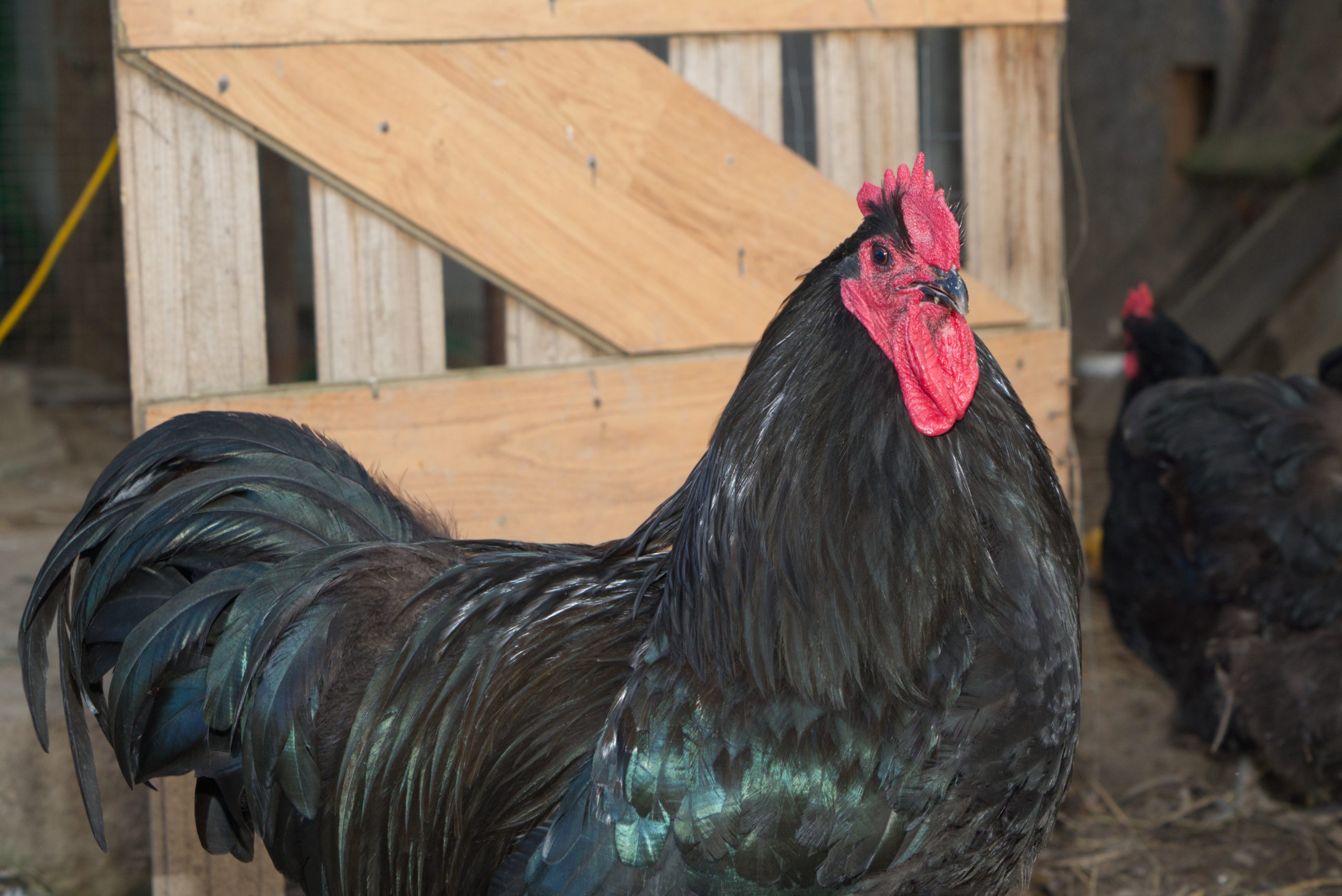
Chicken Guides
Looking for more guides to help you with your backyard flock?
- How Much Does it Cost to Raise Chickens?
- Easy Homemade Pickled Eggs
- Duck Eggs vrs. Chicken Eggs: What’s the Difference?
- Storing Eggs in Limewater (Keeps 12+ Months!)
- 30+ Ways to Preserve Eggs
